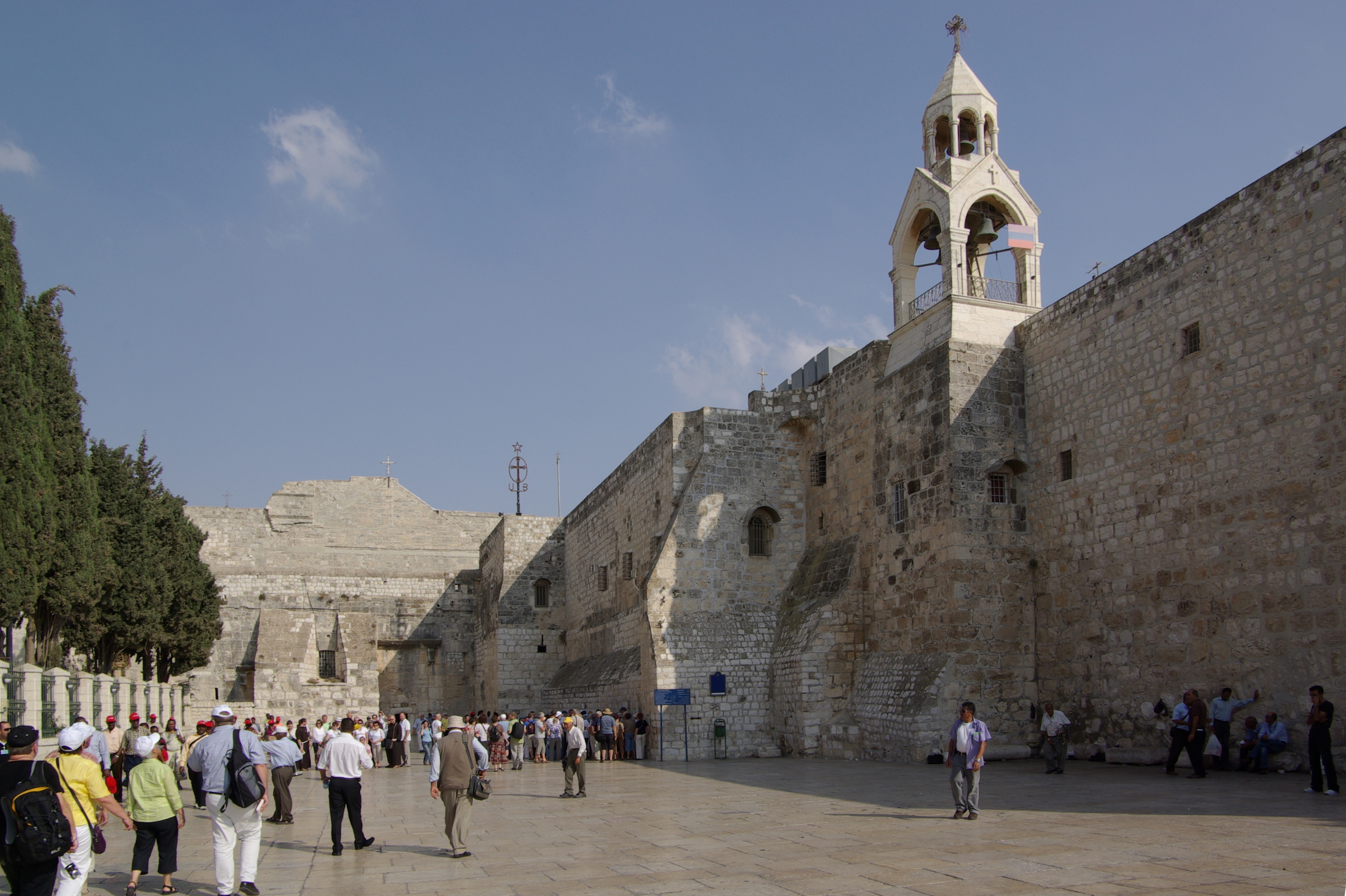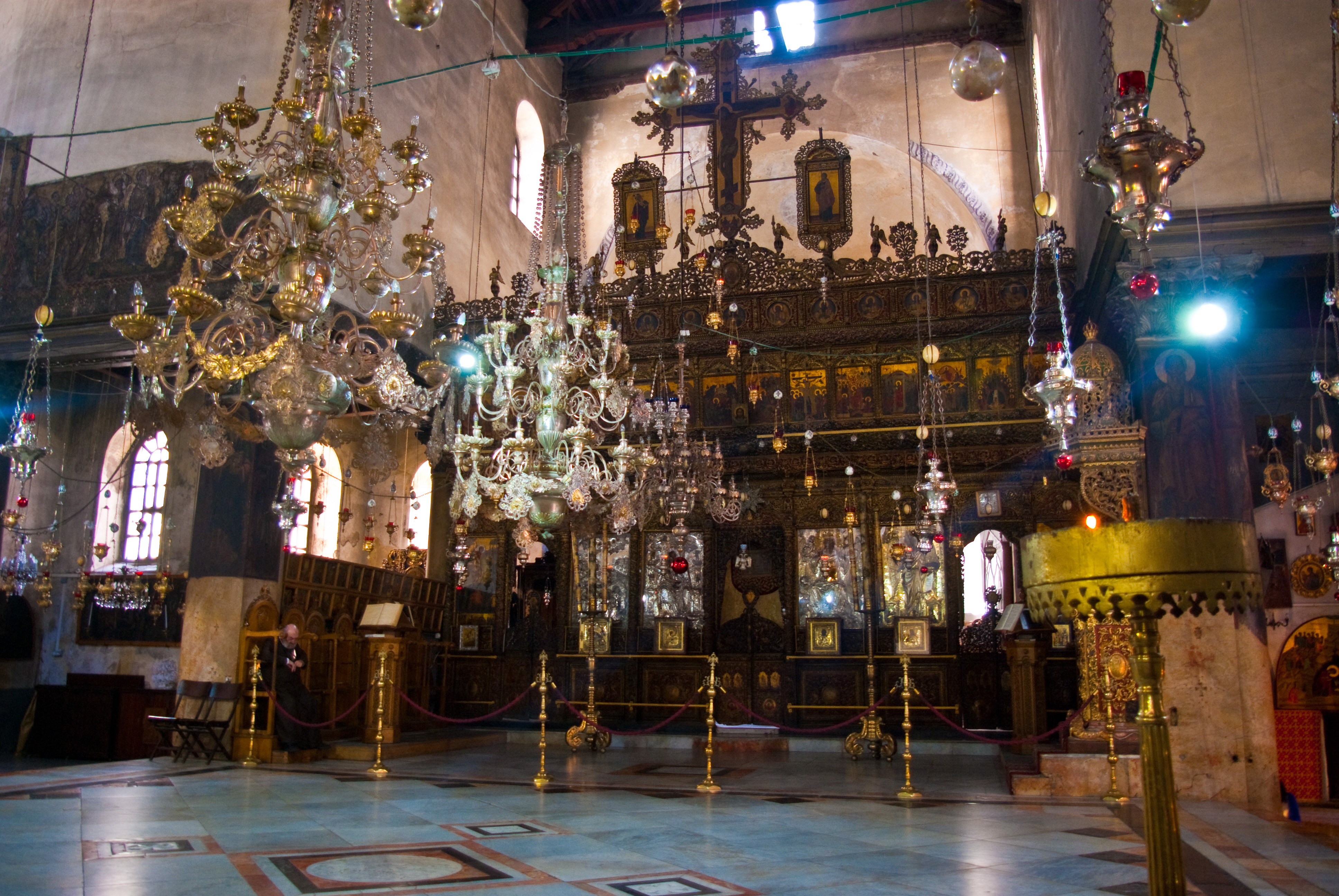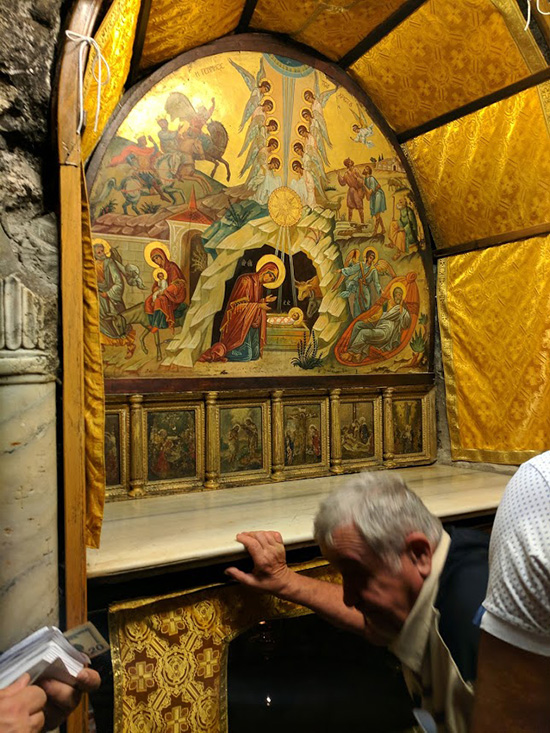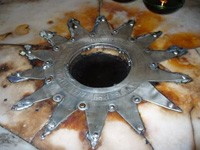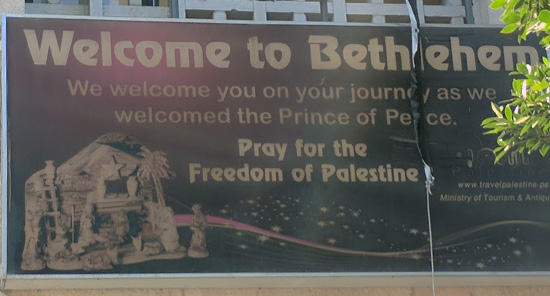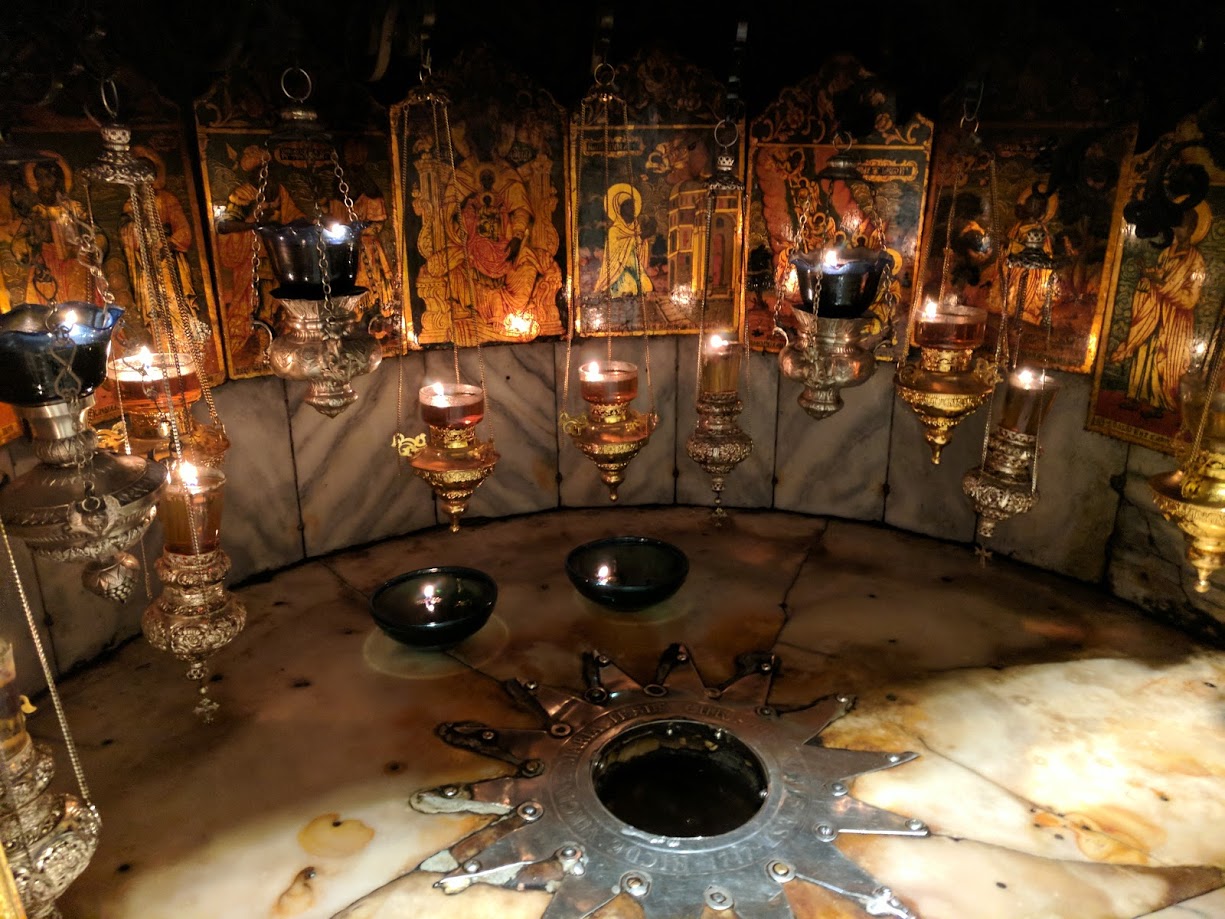 The 14 point silver STAR on the marble floor marks the exact spot where Jesus of Nazareth was born. This Star is below the “Altar of the Nativity” inside the Church of the Nativity in Bethlehem. The 14 points of the Star are said to represent the 14 generations of Jesus Christ from Abraham to David then from David to the Babylonian captivity and after that from Babylonian captivity to Jesus Christ (Matthew 1:17). Some also believe the 14 points represent the 14 Stations of the Cross.
The 14 point silver STAR on the marble floor marks the exact spot where Jesus of Nazareth was born. This Star is below the “Altar of the Nativity” inside the Church of the Nativity in Bethlehem. The 14 points of the Star are said to represent the 14 generations of Jesus Christ from Abraham to David then from David to the Babylonian captivity and after that from Babylonian captivity to Jesus Christ (Matthew 1:17). Some also believe the 14 points represent the 14 Stations of the Cross.
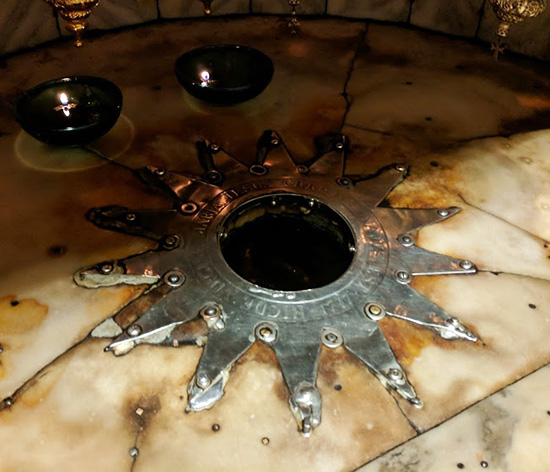 This Star has the words “HIC DE VIRGINE MARIA JESUS CHRISTUS NATUS EST” (Here Jesus Christ was born to the Virgin Mary).
This Star has the words “HIC DE VIRGINE MARIA JESUS CHRISTUS NATUS EST” (Here Jesus Christ was born to the Virgin Mary).
In November 2017 I made my first trip to the Holy Land, spending one week in and around Jerusalem and 2 weeks volunteering at Magdala on the Sea of Galilee. While in Jerusalem my friend Fonda and I had a driver take us to Bethlehem, on the West Bank less than 6 miles south of Jerusalem. It was a 25 minute drive. We were headed for the Church of the Nativity.
the little town of Bethlehem
Bethlehem today is not in Israel but in Palestine, situated at the heart of the conflict between Israel and the Palestinians. Compared to the 300 to 1,000 inhabitants at the time of Jesus’ birth, it has about 25,000 people. One third of them are Palestinian Christians and the remainder are Muslims.
Bethlehem’s Church of the Nativity
The Church of the Nativity was originally commissioned in 327 by Constantine the Great and his mother, St Helena. The original basilica was completed in 339 but later destroyed in a fire during the 6th century Samaritan Revolts. The new basilica was built in 565 by the Byzantine Emperor Justinian who restored it to its original architectural style.
Persians invaded Palestine in 614 and destroyed many churches. They spared the Church of the Nativity when they saw a mosaic on an interior wall depicting the Three Wise Men in Persian dress.
The altar itself, known as the Altar of the Nativity with the 14 point silver star below, is maintained by the Greek Orthodox and Armenian Apostolic churches. Roman Catholics are in charge of a section of the Grotto known as the “Grotto of the Manger”, marking the site where traditionally Mary laid the newborn Baby in the manger.
The site of the Church of the Nativity is a World Heritage Site and was the first to be listed under Palestine by UNESCO. It is the oldest church in the Christian world.
The thousands of people that enter the Church of the Nativity each day throughout the year, kneel down and reach under the Altar of the Nativity to the 14 point silver star that marks the spot where Jesus was born. Many kiss the spot.
.
As we were driving out of Bethlehem I took a photo of the billboard below attached to the side of a building.
Unfortunately at the present time there are near-daily clashes of Palestinian protesters and Israeli forces.
Now I would like to take you back 2000 years to that Christmas Eve when Jesus was born in the little town of Bethlehem, and share this beautiful story written by an Irish priest, Fr Martin Henry:
Light of the World
by Fr Martin Henry
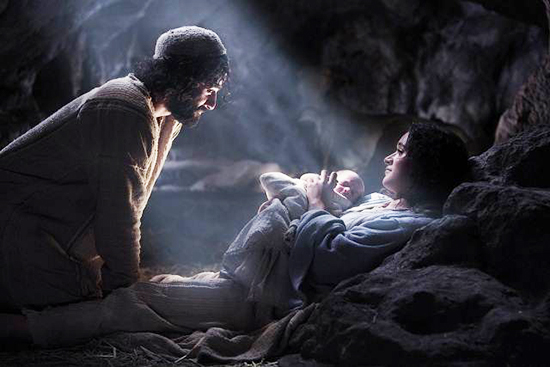
It’s slightly ironic that the Son of God, the “light of the world,” whose birthplace we anticipate in Advent, should have been born not during the hours of daylight, but in the middle of the night. From earliest times, Christian thinkers saw a deep symbolic meaning in the circumstances of Christ’s birth.
In calling Christ, who was born during the hours of darkness, The Light of the World, the early Christians knew that with the birth of Christ a light had come into their world that was of a different order from the natural light of the sun.
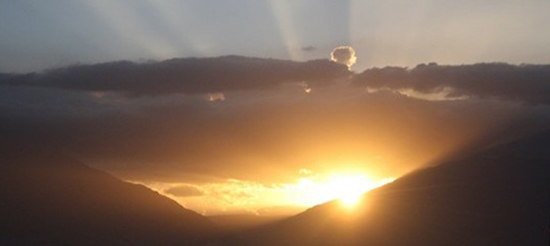
The source of the light of Christ brought, the source of the light he incarnated, was not natural, but supernatural. It was a light that came directly from God. It was not the created light of the sun, but the saving light of God; not fundamentally, the “light of creation,” but the “light of redemption.”
But the early Christians knew that night or darkness is also a symbol of the frequent darkness of human history. And in seeing Christ’s light as illuminating the darkness, they believed that the light of Christ was a force that none of the darkness of this world could ever overcome, as St John was to put it in the opening chapter of the gospel. It was this faith that they passed on to subsequent generations of Christians: the realization that, no matter how terrible or awful human history may be or become, it can never overpower or extinguish the light of Christ.
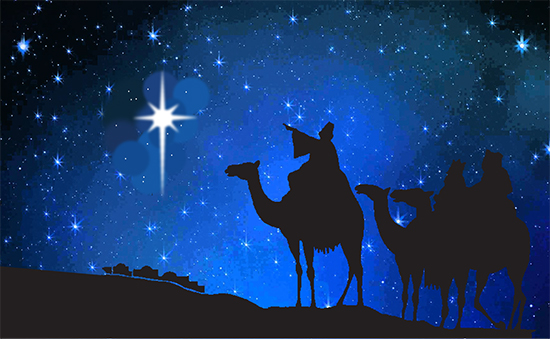
This simple, but profound Christian faith that came into the world roughly two thousand years ago, has admittedly not driven away all the shadows of our world, but has continued to shine throughout the past two millennia. And it can continue to illuminate our path through the “night of the world,” as St Augustine once put it, and leads us all into the full daylight of God’s kingdom in heaven.
The good news of Christmas is that the Son of God who became incarnate for us on that first Christmas night almost two thousand years ago is also God’s promise that humanity’s long journey through the night of history will not have been in vain.
I wish you a blessed last day of Advent (December 24th) and a peaceful Christmas.
Fr Martin Henry

